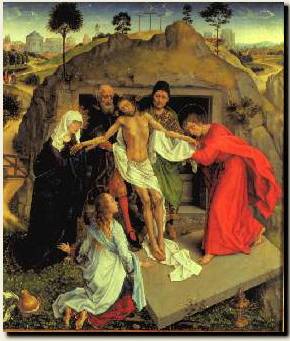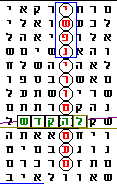
Shroud of Turin, Part 2

According with new testament-Gospel (Matthew 26:19; Mark 14:12; and Luke 22:7), the Death and Resurrection of Christ, occurred at the time of the Passover. (Pesach in Hebrew)
EASTER is the most important Christian festival of the year. Easter celebrates the return to life of Jesus Christ, the founder of Christianity, after His Crucifixion. Jesus' return to life is called the Resurrection. The Gospels tell us that on the morning two days after Jesus's death His tomb was found empty. Soon, Jesus's followers began to see Him and talk with Him. Christians believe Jesus's Resurrection means that they, too, can receive new life after death. The Easter festival celebrates this belief. (Note: this is the traditional view. The webmaster of this site has written articles showing the evidence that Yeshua was crucified on a Wednesday afternoon and rose from the dead as the Sabbath was ending on Saturday evening, exactly 3 days and 3 nights later).
Passover is the 8 day observance commemorating the freedom and exodus of the Israelites (Jewish slaves) from Egypt during the reign of the Pharaoh Ramses II. (Note: Passover plus the Feast of Unleavened Bread is 8 days, and often referred to as simply Passover).
Christians in many European countries call Easter, Pascha. This word comes from the Hebrew word "pesach", which means passover. Jesus was celebrating the Jewish festival of Passover shortly before He was arrested and sentenced to be crucified. Passover recalls how God rescued the Jews from slavery in ancient Egypt. Christians believe that Easter, like Passover, is a time of rescue. They say that by His death and Resurrection, Jesus rescued them from eternal death and punishment for their sins.

Jesus said unto her I am the resurrection, and the life; he
that believeth in me,
though he were dead, yet shall he live; And whosoever liveth and
believeth in me shall never die. Believest thou this?"
~~John 11:25-26~~



|
der
Weyden, (Tournai, 1399c - Bruxelles, 1464) Deposition in the tomb, 1449-1450, The work was painted during the brief stay in Italy in the Holy year 1450, The pilgrimage was an occasion for the painter to get acquainted with Italian art whose influence can be noticed also here (the sketch derives from Beato Angelico in St.Mark's in Florence). Christ who seems still crucified is surrounded by Joseph of Arimathea Nicodemus and Mary. The Magdalene is kneeling down and she is united to John by a line from the tombstone on which the shroud lays upside down draws. These characters present us Jesus in a dramatic way; the crucified becomes the main figure of the whole representation because of his central position and because of the light shed on his lifeless body. Once the stone, which locked the tomb, was rolled away by the strenght of resurrection, it became a sign of victory over death.
|
| (Colle di Vespignano, 1267 approx. - Florence,
1337) Weeping on Christ dead, 1303-1305, painting; Padua, Scrovegni chapel; cm 200 x 185 The prone body of Christ is the core of the painting: it is the only horizontal line. The looks and gestures of all those present converge towards him. The oblique border line of the mountain in the background leads directly to his face and to Mary's, his mother who is holding her dead son on her laps. Like John, manhood opens its arms in the presence of Christ's love, so great that he gave his life to save the world. |
 |
Bible Code Matrix
In this Matrix below we have several words and phrases in relation with the event.
The Central Term is " Shroud of Turin Spiritual ", it appeared only one in all the Bible with a skip sequences (ELS of -14066.)
|
"Shroud of Turin Spiritual"at ELS -14066
A feast; seven days (Passover). Tomb Crucifix
|

|
|
|
The Matrix above in detail:
In the surface text in close proximity to the central term, we see the following passages :
| The word " to consecrate" crosses the central term:
"Shroud Turin Spiritual" |

|
|
"Shall he that is to die be put to death; he shall not be put to death", this mean that after His Crucifixion. Jesus's return to life is called the Resurrection.Image(Figure)of the Dead
|
|
"The holy things as they are being covered, lest they die." Yeshua--Jesus, Image
|
|
Crossing the central term we found the verb "he was wrapped".
|
. |
On the same linea we see
the words "Jesus" in
forward at ELS 3 and in backward at ELS -5
|
| and the word "Witness"
on the same linea with the word Maria Magdlena
|
 |
Messiah, Son, Image, Meriam and " (Passover ,Easter).A feast; seven days" |
| On the same line : "Image of the Dead (man)". Maria, Mother, Feast |  |
|
In the proximity of the word "Yeshua-Jesus" ,we found more interesting words : ,Messiah, Son, Meriam and His Death , Witnesses |
Go Back to Codes in the Bible Hebrew Matrix Index page
.